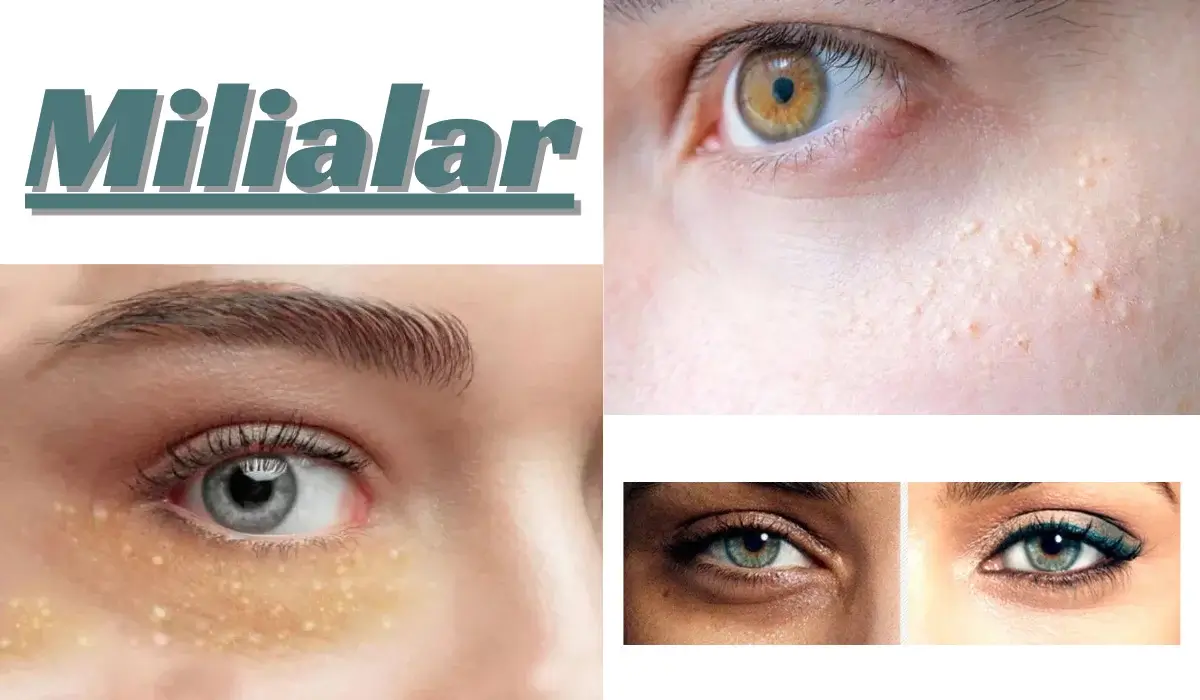Milia, commonly known as milialar (plural form), are small, white or yellowish bumps that often appear on the skin. These tiny cysts form when keratin, a protein found in skin, hair, and nails, becomes trapped beneath the surface of the skin. Although they are most commonly found on the face, especially around the eyes and cheeks, milia can occur anywhere on the body. While these bumps are generally harmless, they can be a cosmetic concern for many people. In this article, we will explore what milia are, their causes, treatment options, and prevention strategies.
Understanding Milia: What Are They?
Milialar are small, dome-shaped bumps that are firm to the touch and do not cause pain or discomfort. These bumps are filled with keratin, which is a protein that plays a key role in the structure of the skin. Unlike pimples, milia do not have an opening at the surface, which is why the trapped keratin cannot escape. As a result, these cysts remain under the skin, giving them their characteristic appearance.
There are different types of milia, including:
- Primary Milia: These occur when keratin gets trapped beneath the skin due to natural processes. Primary milia are common in newborns but can affect people of all ages.
- Secondary Milia: These form after the skin has been injured or damaged, such as after burns, blisters, or long-term sun exposure. Secondary milia are often a result of the skin’s healing process.
What Causes Milia?
The exact cause of milia is not always clear, but several factors can contribute to their development:
1. Sun Damage
Prolonged exposure to the sun can thicken the outer layer of the skin, making it more difficult for dead skin cells to slough off naturally. This can lead to the formation of milia as keratin becomes trapped beneath the surface.
2. Skin Injuries
Injuries to the skin, such as burns, blisters, or even certain types of rashes, can disrupt the normal shedding of skin cells. As the skin heals, it may form milia in the affected area.
3. Use of Heavy Skincare Products
Thick or heavy skincare products, especially those that are oil-based, can clog the pores and prevent the skin from exfoliating properly. This can result in the development of milia.
4. Genetics
Some people may be more prone to developing milia due to genetic factors. If milia are common in your family, you may be more likely to experience them.
5. Age
Milia are often associated with newborns, but they can occur at any age. In adults, milia are more likely to develop due to aging skin, which may not exfoliate as efficiently as it did in youth.
Treatment Options for Milia
While milia are generally harmless and may go away on their own, many people seek treatment for cosmetic reasons. Here are some common treatment options:
1. Topical Retinoids
Topical retinoids, such as tretinoin, can help to exfoliate the skin and promote the shedding of dead skin cells. This can help to reduce the appearance of milia over time. Retinoids should be used under the guidance of a dermatologist, as they can cause irritation if not used correctly.
2. Chemical Peels
Chemical peels involve the application of a solution that exfoliates the top layer of the skin. This can help to remove milia and improve the overall texture of the skin. Glycolic acid and salicylic acid are commonly used in chemical peels for treating milia.
3. Manual Extraction
Dermatologists can manually extract milia using a sterile needle or blade. This procedure should only be performed by a trained professional to avoid infection or scarring.
4. Laser Therapy
In some cases, laser therapy may be used to treat milia. This involves using a laser to target and destroy the cysts without damaging the surrounding skin.
5. Cryotherapy
Cryotherapy involves freezing the milia with liquid nitrogen. This treatment is typically used for more stubborn cases of milia and should be performed by a dermatologist.
Preventing Milia
While it’s not always possible to prevent milia, certain steps can reduce the likelihood of their formation:
1. Regular Exfoliation
Incorporate gentle exfoliation into your skincare routine to help remove dead skin cells and prevent the buildup that can lead to milia. Avoid over-exfoliating, as this can irritate the skin and potentially cause more milia.
2. Sun Protection
Protect your skin from sun damage by using a broad-spectrum sunscreen with an SPF of 30 or higher. Wearing protective clothing and seeking shade can also help prevent sun-induced milia.
3. Choose Non-Comedogenic Products
Opt for non-comedogenic skincare and makeup products, which are formulated to not clog pores. This can help to prevent the development of milia and other types of skin blemishes.
4. Avoid Heavy Skincare Products
If you are prone to milia, avoid using heavy, oil-based skincare products that can clog the pores. Instead, choose lightweight, water-based products that allow the skin to breathe.
5. Moisturize Appropriately
Keep your skin hydrated with a suitable moisturizer. Dry skin can lead to an overproduction of keratin, which may contribute to the formation of milia.
When to See a Dermatologist
Milia are usually harmless and do not require medical treatment. However, if you have persistent milia that do not respond to home treatments, or if you are concerned about the appearance of your skin, it may be time to see a dermatologist. A dermatologist can provide professional treatments to remove milia and offer advice on how to prevent them in the future.
Conclusion: Managing Milia Effectively
Milia may be small and seemingly insignificant, but they can be a source of cosmetic concern for many people. By understanding what causes milia, how to treat them, and how to prevent them, you can take steps to keep your skin smooth and clear. Whether you choose to manage milia at home or seek professional treatment, the key is to be patient and consistent with your skincare routine.




